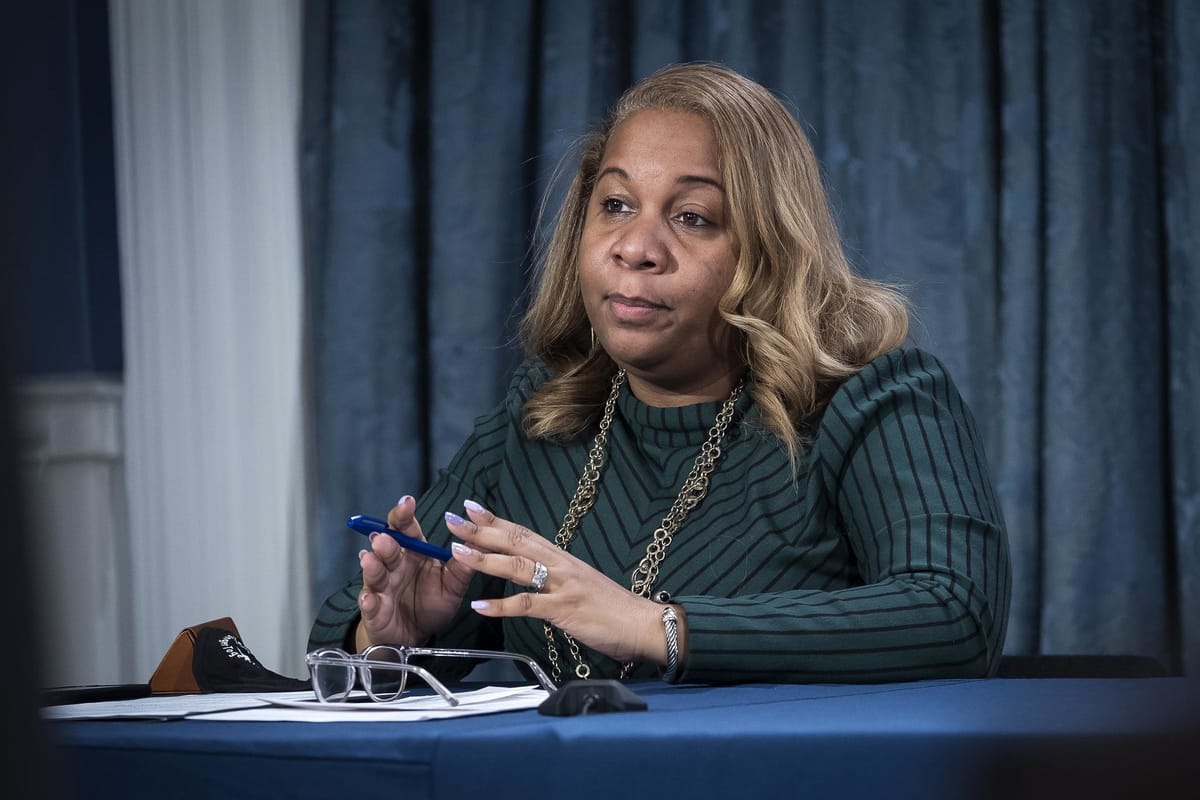Two Unrelated COVID Cases Will Not Trigger School Building Closures, New Rules Rolled Out


By Reema Amin and Amy Zimmer, Chalkbeat New York
Two unrelated cases of coronavirus among staff and students will no longer trigger building closures for New York City schools, Mayor Bill de Blasio announced Thursday.
Starting Monday, individual schools — not entire buildings — will shutter if there are four or more cases within a week in different classrooms, and if test and trace investigators find that these cases were contracted inside of the school, officials said. The city will now ramp up testing to 40% of students and staff when there are two to three new cases detected inside of a school. Typically, schools test 20% of students and staff weekly.
“We have heard the voices of our school communities calling for increased stability around in-person learning, as long as we can do so safely,” Chancellor Meisha Porter said.
School buildings will no longer close for 24-hours when cases are detected, but individual classrooms will still close when someone tests positive for the virus. Some public health experts have questioned the need to shutter classrooms since students are social distancing, but in this case, Porter told reporters, “We must still assume that everyone is a close contact.”
The rule changes the policy that entire school buildings must close for 10 days when there are two or more positive coronavirus cases that have no clear links. Even if a school had no positive cases in their community but shared a building with another school that did, the entire campus would have to shutter.
Outcry over the two-case rule had been growing increasingly loud as the number of repeated campus shutdowns skyrocketed after the city began conducting weekly coronavirus testing for students and staff in the buildings. The city expanded testing from monthly to weekly when it reopened buildings after November’s system wide shutdown, first inviting back students in elementary schools and in District 75, which serve children with complex disabilities. The frequent closures were causing havoc for families and disrupting teaching and learning as students and teachers had to pivot on a dime from in-person to remote learning.
The city has seen more than 2,300 closures of at least 10 days since the start of the year, according to public data. At the start of this week, more than 100 schools were in the midst of these extended closures. Two days later that number dropped to one.
Several epidemiologists and infectious disease specialists told Chalkbeat previously that New York City’s school closure threshold was “overly reactive” and “very conservative.” Four public health experts agreed that in most cases, only true close contacts of infected people need to quarantine.
Susan Hassig, associate professor of epidemiology at Tulane University, had told Chalkbeat that broad closures might be necessary if there is a link between multiple infected people across different classrooms. She gave the example of a football team with an infected player whose teammates cut across different classrooms and grades.
“I would take a building closure as a very last step based upon some kind of really substantial event,” Hassig said. “If it were 11th and 12th graders, and half a dozen turned up affected, I would send all the 11th and 12th graders home for 10 days, but not the whole school.”
Since February, de Blasio said the city was reevaluating the rule but had not provided any new details until Thursday, just one day before a new opt-in period for families wanting some in-person learning this year was about to close.
Michael Mulgrew, president of the city teachers union, originally opposed any changes to the rule because he believed it would weaken safety standards at schools. But on Thursday, the union had reached an agreement with the city on the new changes.
“With our increased knowledge about the spread of the virus, and as more teachers and other school staff have been vaccinated, our medical experts are convinced that the rule can be changed and still maintain safety,” Michael Mulgrew, president of the city’s teachers union, said in a statement. “This change will mean that while many classrooms will continue to close, the number of overall schools closed will decline, a repeated request of both teachers and parents.”
Still, the overwhelming majority of New York City students, or roughly 700,000 children, are learning exclusively from home, and the city must work to convince them it’s safe for them to return to buildings, he said.
“If we are going to have anything like a normal opening in September,” Mulgrew said, “the mayor needs to find ways to assure them that our COVID precautions remain strong and that schools are safe for their children.”
Chalkbeat is a nonprofit news site covering educational change in public schools.




